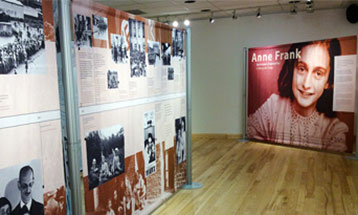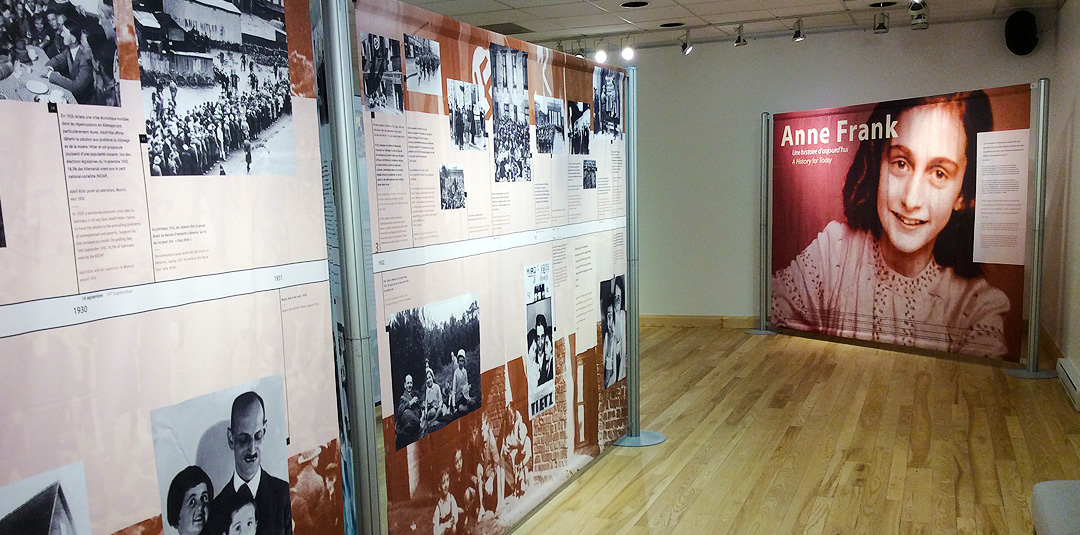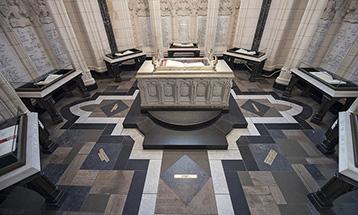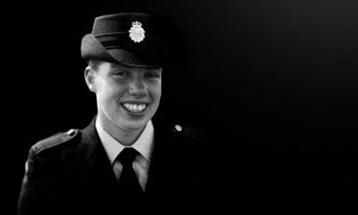The Anne Frank House was established in the Netherlands in 1957 in cooperation with Anne Frank’s father, Otto Frank. Mr. Frank was inspired to share his daughter’s story by opening the place in which his family hid over 70 years ago. The site was intended as a place for young people, from a variety of backgrounds, to meet and take action to prevent hatred in their own lives and communities.
Otto Frank truly believed young people were essential in bringing about change and preventing history from repeating itself. This is why the Anne Frank House’s mandate is to bring awareness to the powerful story of Anne Frank, with the aim of educating visitors on the dangers of anti-Semitism, racism and discrimination and the importance of freedom, equal rights and democracy.
For several years, Veterans Affairs Canada has provided funding to the Anne Frank House. In 2019, the Anne Frank House received support from Veterans Affairs Canada’s Commemorative Partnership Program for a traveling exhibition entitled Anne Frank, A History for Today to visit communities across Canada.
Taking history on the road
The exhibit originally took to the road in the 1990s, allowing Anne Frank’s story to reach more young people around the world. The traveling exhibition visited various schools and museums across Canada in 2011. Julie Couture works in educational projects at the Anne Frank House and has organized the traveling exhibition in over 80 Canadian cities. She shares Otto Frank’s goal of making “this museum a meeting point for all young people to come together, discuss and take action in order to make a difference in preventing hatred in their own life.” The traveling exhibit shares the story of Anne Frank by featuring the different realities she faced: the rise of Hitler, the persecution of the Jews and the Second World War. It shows the direct consequences that historical events can have on personal lives. The exhibit also shares the role of women during the Second World War, and major battles fought by Canadians in that conflict, including the Liberation of the Netherlands.
Over 1,500 Canadian students have had the chance to be official guides for the exhibition. “By reaching young people across Canada and having high schools host the exhibition, we want to focus on young people of today, working on a better tomorrow,” explained Julie Couture. Training to be guides for the exhibit encourages youth to engage in discussions to better understand discrimination and how far hatred can go if left unchallenged. Through this volunteer opportunity, youth are given a voice to share this part of history and their own story, inspiring their peers to do the same. One of the innovative ways the Anne Frank House discusses this story with the youth of today is by using the same tools youth use in their daily lives, such as a video camera. The Anne Frank House created short video diaries, showing what it would have been like if Anne had a video camera instead of a diary. For youth of today, who spend a great deal of their time sharing their lives online, videos diaries make Anne’s story much more relatable.
Looking onward
So far, the traveling exhibit has reached more than 125,000 visitors in Quebec, Ontario, British Columbia, Manitoba, Alberta and the Yukon. Within the coming year, the traveling exhibit plans to focus on isolated communities across Canada that did not have the opportunity to participate in this initiative in previous years. To be more inclusive of the diverse communities, the project will offer educational material in the languages of First Nations, Métis and Inuit communities, in addition to French and English.
It is important for Canadians to acknowledge that there are people and communities who face discrimination in our country. Julie Couture wants the traveling exhibit to make “young people aware of the power they have to make a difference. The fact that we are still listening to this young girl more than 75 years after her death, shows our young people of today that their voice is also important and deserves to be heard, and they can change things if they are not satisfied.” The traveling exhibit is another important tool in educating young leaders to actively promote diversity and build a truly inclusive Canada.
Veterans Affairs Canada honours those who served Canada in times of war and peace and keeps the memory of their achievements and sacrifices alive for all Canadians. Funding is available to organizations undertaking remembrance initiatives through the Commemorative Partnership Program
Date published: 2020-10-27




